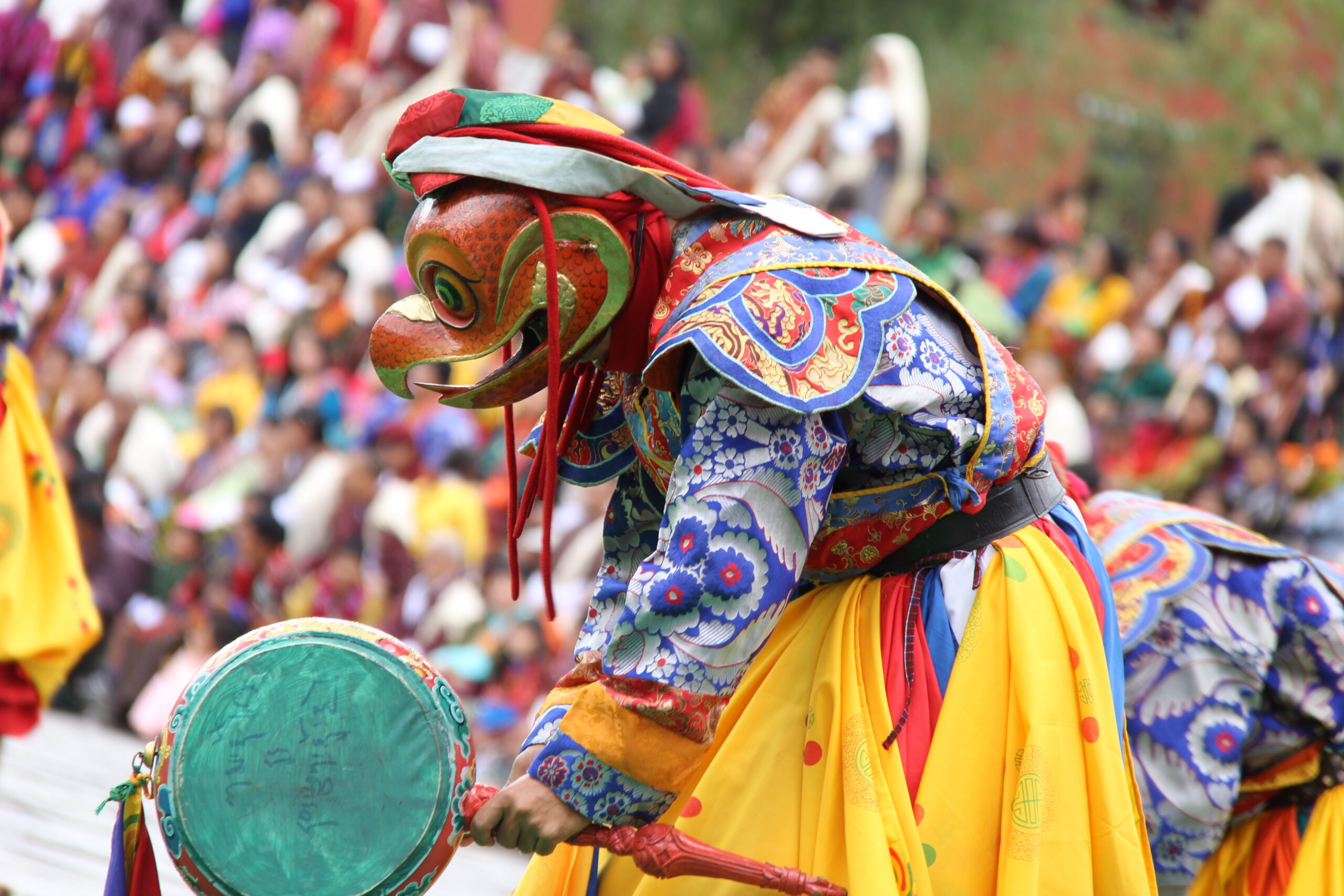Thimphu Tshechu is a three-days religious festival that takes place in Thimphu, the capital.
Thimphu Tshechu was established in the 15th century by the fourth Desi Gyalse Tenzin Rabgye, to honor Guru Padmasambhava.
During the festival, locals put on their most expensive and elaborate traditional outfits, showcasing Bhutan’s rich culture and heritage.
The festival showcases various mask dances and plays that narrate Guru’s teaching and journey. For instance, on the first day, The Dance of the Four Stags is performed. In this dance, monks dressed as stags retell the story of when Guru subdued the King of the Wind, who caused harm to the world. After, Guru rides the stag, the support animal of the King of the Wind.
The Stag and the Hound
The Stag and the Hound is a play that takes place on day-one of the festival.
The play, told in two parts, tells the story of the conversion of a hunter called Gonpo Dorji, to Buddhisim, by Milarepa.
The Dance of the 21 Black Hats with Drums
The Dance of the 21 Black Hats with Drums takes place on day-two of the festival. It marks the victory of Buddhism over evil. After the 21 Black Hats have destroyed the non-believers, they beat the drums. The drumbeat represents Buddhism, because it’s something that can’t be shown in any other way, since Buddhism doesn’t have a physical form.
Other performances include stories of heaven and afterlife. All of these performances are linked to Guru in one way or another. While some of the performances can be overwhelming for some spectators, it is encouraged to attend them as it can help acquaint oneself to death.


